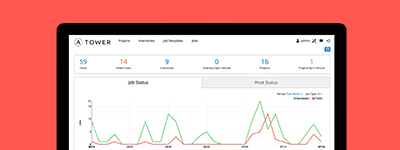supervisorctl - Manage the state of a program or group of programs running via supervisord
Synopsis
Manage the state of a program or group of programs running via supervisord
Requirements (on host that executes module)
- supervisorctl
Options
| parameter | required | default | choices | comments |
|---|---|---|---|---|
| config (added in 1.3) |
no | The supervisor configuration file path | ||
| name |
yes | The name of the supervisord program or group to manage. The name will be taken as group name when it ends with a colon : Group support is only available in Ansible version 1.6 or later. | ||
| password (added in 1.3) |
no | password to use for authentication | ||
| server_url (added in 1.3) |
no | URL on which supervisord server is listening | ||
| state |
yes |
|
The desired state of program/group. | |
| supervisorctl_path (added in 1.4) |
no | path to supervisorctl executable | ||
| username (added in 1.3) |
no | username to use for authentication |
Examples
# Manage the state of program to be in 'started' state. - supervisorctl: name=my_app state=started # Manage the state of program group to be in 'started' state. - supervisorctl: name='my_apps:' state=started # Restart my_app, reading supervisorctl configuration from a specified file. - supervisorctl: name=my_app state=restarted config=/var/opt/my_project/supervisord.conf # Restart my_app, connecting to supervisord with credentials and server URL. - supervisorctl: name=my_app state=restarted username=test password=testpass server_url=http://localhost:9001
Notes
Note
When state = present, the module will call supervisorctl reread then supervisorctl add if the program/group does not exist.
Note
When state = restarted, the module will call supervisorctl update then call supervisorctl restart.
This is a Core Module
For more information on what this means please read Core Modules
For help in developing on modules, should you be so inclined, please read Community Information & Contributing, Helping Testing PRs and Developing Modules.


